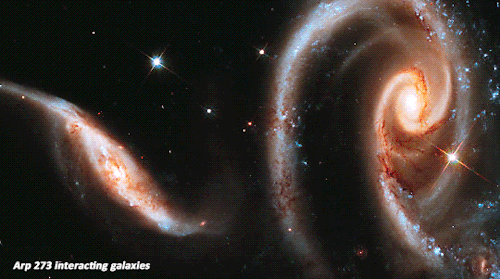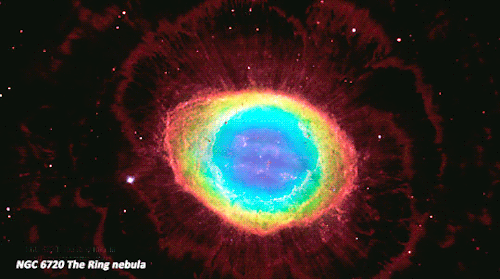Astrophotography - Blog Posts

After several months, my SECOND “#1 NEW RELEASE”, is finally available in print! I was almost in tears when I took the pic of my daughter reading it. Thanks to Traci for the support! “Hello Luna, It’s Me Again” is an imaginary conversation with the Moon and a collection of lunar images from my own telescope. If you’re interested, it’s available on Amazon. Much love, and Thank You! https://www.amazon.com/dp/B09M577SW8/ . . . . #celestrontelescope #celestron127slt #astrophotography #moon #luna #books https://www.instagram.com/p/CWj4otLs41e/?utm_medium=tumblr

Saturn 08/29/2019 from Atlanta, GA - Celestron 127slt mak, iPhone 8, registax, ps for brightness and contrast. #astrophotography #astronomy #backyardastronomy #space #atlanta #georgia #celestron127slt #celestrontelescope https://www.instagram.com/p/B1xv_NKHzPl/?igshid=8qwoa1osws83

Southern Tadpole © Logan Carpenter
So beautiful!

Reflection of the Galaxy (by Ali Erturk)
Pfeiffer Beach, California
These pictures are beautiful!
The Overview Effect
Observing Earth from space can alter an astronauts’ cosmic perspective, a mental shift known as the “Overview Effect.” First coined by space writer Frank White in 1987, the Overview Effect is described as a feeling of awe for our home planet and a sense of responsibility for taking care of it.
See Earth from the vantage point of our astronauts in these perspective-changing views:
Floating Free in Space

Astronaut Bruce McCandless II used his hands to control his movement above the Earth during the first-ever spacewalk that didn’t use restrictive tethers and umbilicals. Fellow crew members aboard the space shuttle Challenger captured this image on Feb. 7, 1984, through windows on the flight deck.
Of his famous spacewalk, McCandless wrote in 2015: “My wife [Bernice] was at mission control, and there was quite a bit of apprehension. I wanted to say something similar to Neil [Armstrong] when he landed on the moon, so I said, ‘It may have been a small step for Neil, but it’s a heck of a big leap for me.’ That loosened the tension a bit.”
Earth Reflections

Astronaut Tracy Caldwell Dyson looks through a window in the Cupola of the International Space Station (ISS). A blue and white part of Earth and the blackness of space are visible through the windows. The image was a self-portrait using natural light.
In a preflight interview for Expedition 23/24, Dyson said: “hands down, the best part about it is being able to look at that view every day and during the time frame we’ll be up there, hopefully, we’ll have a big bay window and much more opportunity to observe this beautiful planet.”
Taking in the View

As astronaut Nick Hague prepared to conclude his six-month stay aboard the ISS, he shared this photo saying: “Today is my last Monday living on this orbiting laboratory and I’m soaking up my final views. The @Space_Station is truly an engineering marvel. #MondayMotivation."
He and Expedition 60 and Soyuz commander Alexey Ovchinin of the Russian space agency Roscosmos completed a 203-day mission, spanning 3,248 orbits of Earth, and a journey of 80.8 million miles.
Earthrise

On Dec. 24, 1968, Apollo 8 astronauts Frank Borman, Jim Lovell and Bill Anders became the first humans to witness the Earth rising above the Moon’s surface.
Anders, photographing the Moon from the right-side window, caught sight of the view, and exclaimed: “Oh my God, look at that picture over there! There’s the Earth comin’ up. Wow, is that pretty!”
The Blue Marble

Besides Earthrise, the Blue Marble is probably the most famous image of Earth that NASA has produced. Taken by the Apollo 17 crew on their way to the Moon in 1972, the Blue Marble and other NASA imagery of Earth has been credited by some with helping to fuel the environmental movement.
For more information on the Overview Effect, check out this episode of Houston We Have a Podcast.
Make sure to follow us on Tumblr for your regular dose of space: http://nasa.tumblr.com
My Blog!
Hello, this is my blog dedicated to astrophotography and other interests in astronomy! I am based in Arlington, Texas, and I love all fields of astronomy, and I am especially passionate about taking pictures of space! Sail the stars with me and have fun!

Dark Skies...
The ever present Dark Skies: attempting to gather the light of the night into a gentle hug. Trying to smother the ability of the cosmos to keep a small light burning in the window. This night, those Dark Skies will lose their battle. They will be defeated by the forces of light. Fighting without the moon, the stars are themselves the star. Fight on Milky Way. Show us the way home. Keep the light lit in the sky we love...dennis
Jupiter is so pretty






The planet Jupiter
#beautiful










The Best of Hubble_1
Grades don’t determine your intelligence.
Grades don’t determine your intelligence.
Grades don’t determine your intelligence.
Grades don’t determine your intelligence.



Dale & Karlie | Gold Coast 🇦🇺 on Instagram
Audience member: “does this have any practical applications?”
Math lecturer: “probably not”

brilliant binaries 3/6/2019

M🌑🌑N ~ 3/1/2019
5 Facts About Earth's Radiation Donuts 🍩
Did you know that our planet is surrounded by giant, donut-shaped clouds of radiation?

Here’s what you need to know.
1. The radiation belts are a side effect of Earth’s magnetic field

The Van Allen radiation belts exist because fast-moving charged particles get trapped inside Earth’s natural magnetic field, forming two concentric donut-shaped clouds of radiation. Other planets with global magnetic fields, like Jupiter, also have radiation belts.
2. The radiation belts were one of our first Space Age discoveries

Earth’s radiation belts were first identified in 1958 by Explorer 1, the first U.S. satellite. The inner belt, composed predominantly of protons, and the outer belt, mostly electrons, would come to be named the Van Allen Belts, after James Van Allen, the scientist who led the charge designing the instruments and studying the radiation data from Explorer 1.
3. The Van Allen Probes have spent six years exploring the radiation belts

In 2012, we launched the twin Van Allen Probes to study the radiation belts. Over the past six years, these spacecraft have orbited in and out of the belts, providing brand-new data about how the radiation belts shift and change in response to solar activity and other factors.
4. Surprise! Sometimes there are three radiation belts

Shortly after launch, the Van Allen Probes detected a previously-unknown third radiation belt, created by a bout of strong solar activity. All the extra energy directed towards Earth meant that some particles trapped in our planet’s magnetic field were swept out into the usually relatively empty region between the two Van Allen Belts, creating an additional radiation belt.
5. Swan song for the Van Allen Probes

Originally designed for a two-year mission, the Van Allen Probes have spent more than six years collecting data in the harsh radiation environment of the Van Allen Belts. In spring 2019, we’re changing their orbit to bring the perigee — the part of the orbit where the spacecraft are closest to Earth — about 190 miles lower. This ensures that the spacecraft will eventually burn up in Earth’s atmosphere, instead of orbiting forever and becoming space junk.
Because the Van Allen Probes have proven to be so hardy, they’ll continue collecting data throughout the final months of the mission until they run out of fuel. As they skim through the outer reaches of Earth’s atmosphere, scientists and engineers will also learn more about how atmospheric oxygen can degrade satellite measurements — information that can help build better satellites in the future.
Keep up with the latest on the mission on Twitter, Facebook or nasa.gov/vanallenprobes.

vintage book shopping. came across this curiosity(?)/monstrosity(?). no idea what to make of it.

THIS is what i study
andenes, norway 2/22/2019


So long, Oppy.

crab contours 2/6/2019

have I mentioned that one week ago TODAY i launched a sounding ROCKET? (model pictured above)

We made it, friends.

Hi, I’m proud of this one. 10/23/2018

Let’s just talk about how much I love space... and my Nikon. 1/12/2018


22/04/18. I got great pictures of the moon through my telescope
11/02/2018
Tried to look at stars through my window however couldn't see anything I blame British weather, while my neighbour hid in my bed because it was cold




